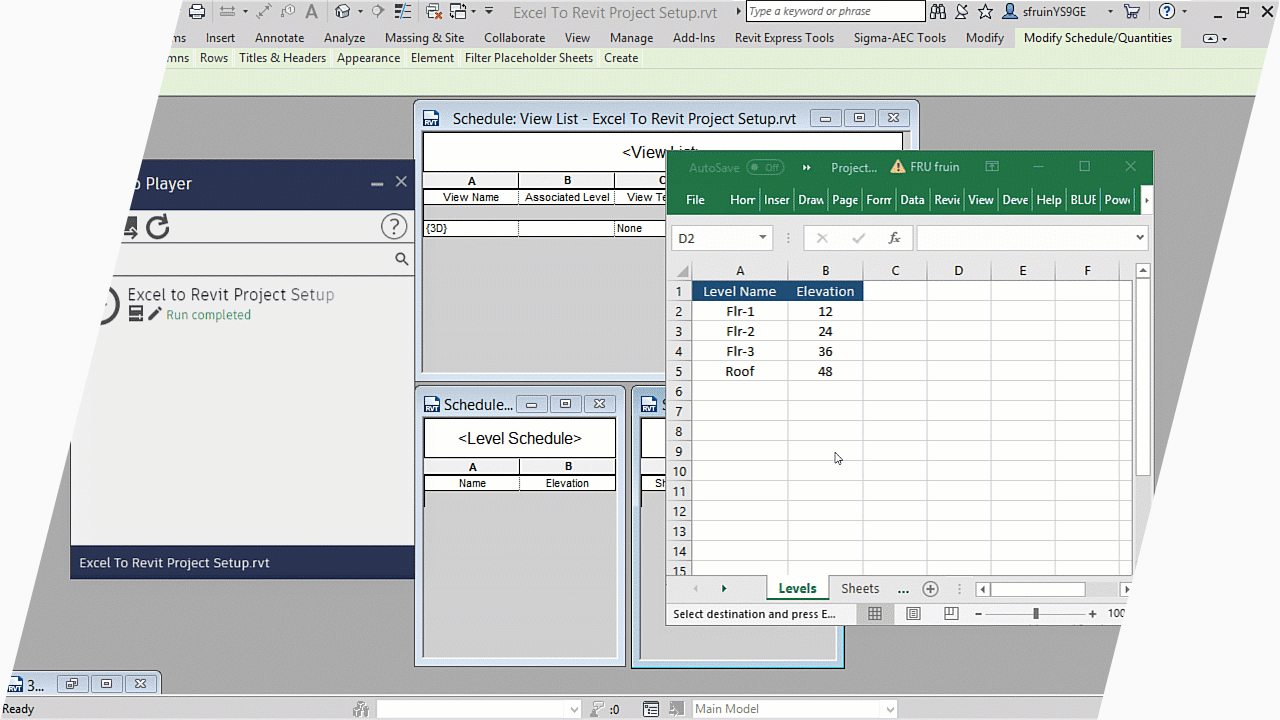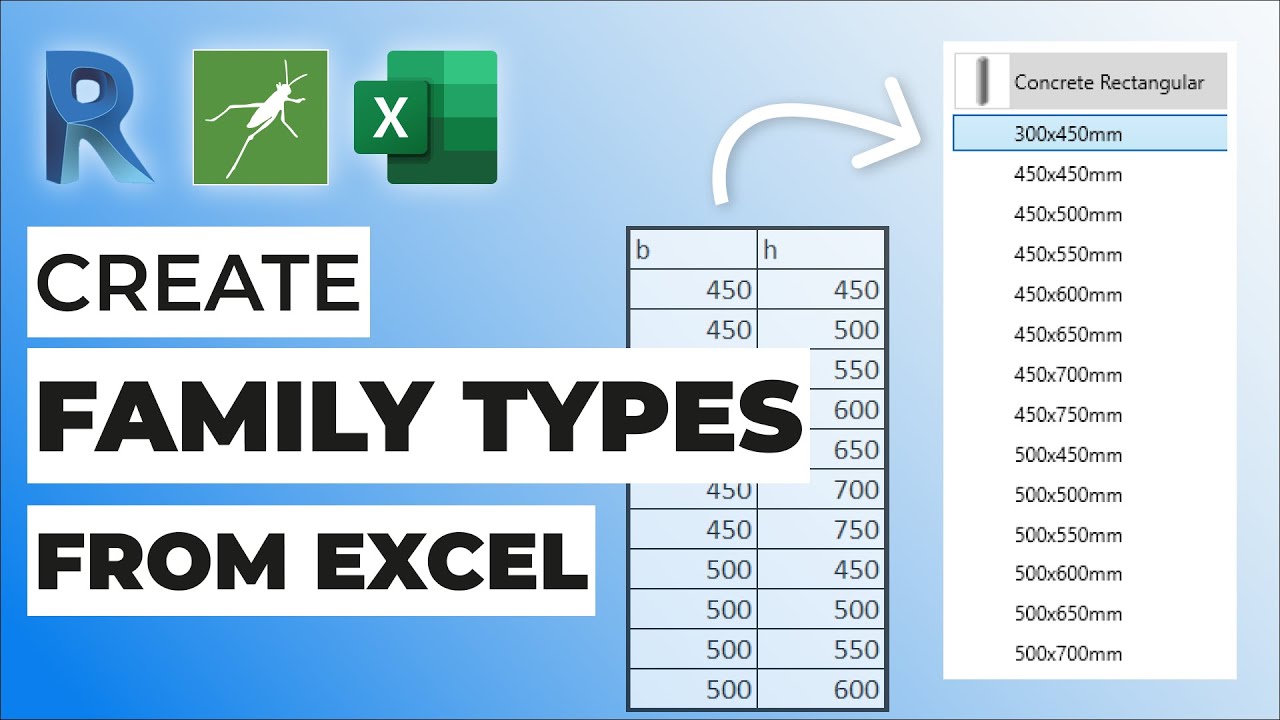Efficiency Satisfies Accuracy: Explore Essential Revit Tools
Wiki Article
Excel Empowerment: Supercharge Your Revit Projects With Seamless Information Import
With seamless data import, Excel empowerment can be the key to unlocking your job's complete capacity. Picture streamlining the import process and maximizing efficiency via smooth data combination. In this short article, we will certainly share suggestions and tricks for utilizing Excel in your Revit jobs.The Power of Excel in Revit Projects
You can supercharge your Revit tasks by taking advantage of the power of Excel for seamless data import. Excel is a flexible device that can substantially enhance your workflow and productivity in Revit (revit plugins). With Excel, you can easily import and take care of big quantities of information, saving you time and effortOne of the vital benefits of utilizing Master Revit is its ability to handle complicated calculations and solutions. You can utilize Excel to execute calculations on your information, such as producing quantities, calculating costs, or assessing efficiency. This can be specifically useful when functioning with big tasks that require comprehensive calculations.

Furthermore, Excel supplies a familiar and easy to use interface for functioning with information. You can arrange and manipulate your data in a spread sheet layout, making it very easy to view and modify. When working together with others or when you require to make fast changes to your project information., this can be especially helpful.
Moreover, Excel permits you to conveniently import and export information between Revit and other software applications. You can import information from external resources right into Revit, such as product requirements or tools routines, and export information from Revit to Excel for further evaluation or reporting.
Streamlining Information Import With Master Revit
When making use of Excel as a device,Improving information import in Revit becomes less complicated. With Excel, you have the power to perfectly import and take care of huge amounts of data in your Revit tasks. By utilizing the familiar interface and capability of Excel, you can conserve time and increase efficiency in your workflow.Among the vital benefits of utilizing Excel for data import in Revit is the capacity to quickly arrange and adjust information prior to importing it right into your task. With Excel's powerful features, such as sorting, filtering system, and solutions, you can quickly tidy up and style your information to satisfy the requirements of your Revit task.
In addition, Excel enables you to import data from numerous sources, such as data sources, spread sheets, or perhaps web-based applications. This flexibility gives you the liberty to collect data from various systems and settle it right into one central place for simple accessibility and monitoring.
Furthermore, Excel offers the option to produce personalized templates for data import in Revit. By producing design templates tailored to your job's certain needs, you can ensure consistency and precision in your data import procedure.
General, using Excel as a tool for data import in Revit streamlines the process and boosts your performance. Why not take benefit of this effective tool and supercharge your Revit tasks with seamless data import using Excel?
Making Best Use Of Efficiency With Seamless Data Combination
Take full advantage of performance by perfectly incorporating and taking care of data in your operations. Gone are the days of manually inputting information right into your system, losing precious time and resources. With seamless information integration, you can streamline your procedures and supercharge your efficiency.
When you have a seamless assimilation system in location,Managing data becomes a wind. You can quickly organize and classify your data, making it much easier wikipedia reference to obtain and analyze. State bye-bye to the days of undergoing limitless spreadsheets for that a person item of details you require.

Excel Advice for Revit Projects
With these pointers and techniques, you'll be able to efficiently handle your Revit tasks using Excel. One of the initial things you can do is to utilize Excel's powerful sorting and filtering system functions. This will certainly permit you to promptly arrange and evaluate your job data. You can sort elements by their names or filter them based on details requirements, such as their condition or place. One more beneficial feature is the capability to produce solutions in Excel. You can make use of formulas to determine amounts, do complicated estimations, and also automate certain tasks. This can conserve you a whole lot of time and initiative in your Revit tasks. In addition, you can use Excel to develop customized layouts for data import and export. By doing this, you can ensure consistency and accuracy when moving information in between Revit and Excel. Lastly, do not forget Excel's conditional format attribute. You can use this to highlight particular elements or worths based on particular conditions. This can help you promptly identify and attend to any concerns or abnormalities in your project data. In general, grasping these Excel techniques and suggestions will significantly improve your ability to manage and control information in your Revit jobs.Using the Excel-Revit Connection for Success
To make the Check Out Your URL most of your Excel-Revit link, make the most of the ability to easily transfer and integrate additional hints task information. By harnessing this effective link, you can supercharge your Revit projects and improve your operations. With simply a couple of basic steps, you can import data from Excel directly into Revit, conserving you time and guaranteeing accuracy.Among the essential advantages of the Excel-Revit link is the capability to move data effortlessly. Whether you are importing schedules, area information, or perhaps geometry info, Excel gives a straightforward interface that permits you to arrange and manipulate your data before importing it into Revit. This suggests you can conveniently update and customize your job info in Excel, and with a few clicks, transfer those modifications directly right into your Revit version.
Along with moving information, the Excel-Revit link also enables synchronization. This suggests that any type of changes made in Excel can be instantly upgraded in Revit, guaranteeing that your job details is always approximately day. This synchronization attribute is particularly valuable when taking care of intricate and huge tasks, as it eliminates the need for manual data entrance and lowers the threat of mistakes.
Conclusion
So there you have it - the power of Excel in Revit tasks can not be taken too lightly. By streamlining data import and making best use of performance through seamless information assimilation, you can supercharge your projects and attain success. With the Excel-Revit connection, you have the devices to take your jobs to the following degree and attain phenomenal outcomes. Don't wait any kind of longer, start utilizing the power of Excel in your Revit projects today and unlock a world of opportunities.You can supercharge your Revit projects by harnessing the power of Excel for smooth data import. With Excel, you have the power to effortlessly import and take care of big amounts of data in your Revit projects (revit tools). Overall, grasping these Excel tricks and tips will greatly enhance your capacity to manage and manipulate information in your Revit jobs
Whether you are importing timetables, room information, or also geometry details, Excel offers an user-friendly interface that permits you to organize and manipulate your information prior to importing it right into Revit. By streamlining information import and taking full advantage of effectiveness via seamless information assimilation, you can supercharge your tasks and attain success.
Report this wiki page